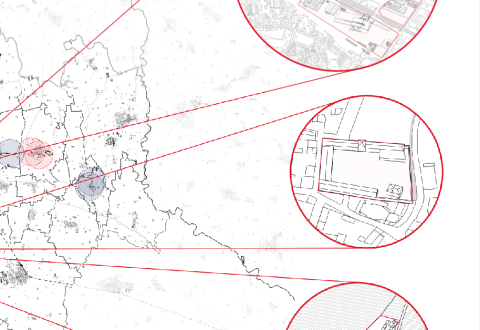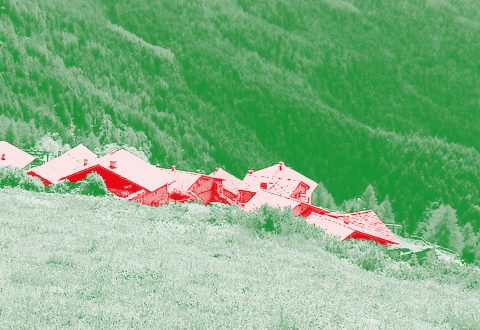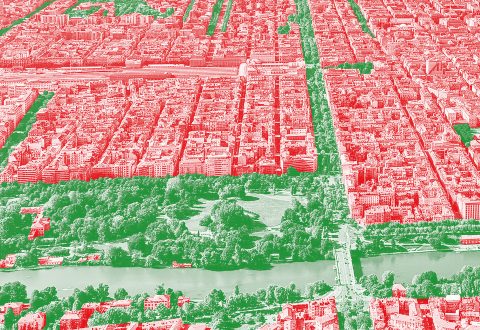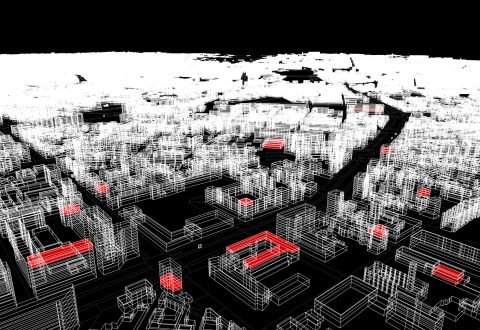A new regional regeneration model in Lombardy
Urban regeneration has become a key concept in relation to urban transformation issues and in recent years has been effectively expressed in the development of ad hoc legislative instruments. The Lombardy region, for example, now has one of the most advanced legislations on urban regeneration.
Although the tools available to administrations have proved very effective in dense and dynamic urban contexts such as Milan, however, their application in small and medium-sized urban areas remains an open question.
In these areas, the demand for regeneration is difficult to translate into a model of intervention transferable to every context. It is built starting from a process of analysing each region to recognise and interpret the specific context, intercept areas considered separate and incorporate often non-explicit social demands able to redefine the perimeters and ingredients of regeneration.
Starting with this consideration, the Future Urban Legacy Lab (FULL) for the Lombardy Region – General Directorate for Regional and Civil Protection – and ANCI Lombardy have prepared a model for regional regeneration aimed at providing operational and specific solutions for each region by systematising existing regional, social and spatial resources.
This model is proposed as a new regeneration toolbox to be used by municipalities and Centres of Competence, with the intention of guiding strategic planning and programming, implementation and management actions
Year
2020
Scientific coordinators
Coordinators
Research group
Angelo Caccese, Caterina Quaglio, Adriano Aimar, , Mariella Ferraro
Tags
#TransformativeUrbanism
An Effective Solution
FULL’s research aims to define a model of regional regeneration that looks at the existing fabric, the morphology of settlements and the specific recurrences of each context and region analysed.
The model prepared suggests a shift to an ordinary condition in which urban and regional regeneration are the structural and not the extraordinary form of urban processes.
FULL’s contribution aims to identify the possibilities offered by the Lombardy Region’s law L.R.18/19 for urban and regional regeneration even in small and medium-sized urban areas, and at supporting local administrations in defining an effective intervention model able to take advantage of the potential expressed by the regions.
An Alternative Method
Early explorations
The analyses and field investigations conducted during the research in three specific and very different regions – the five municipalities of the Lecco area (Casatenovo, Missaglia, Besana, Monticello and Triuggio), the municipalities of the Cremasco area and Varedo -, as well as open dialogues with municipal administrations and local players, brought to light a real demand for parallel or alternative regeneration potential compared to an initial catalogue of sites shared at regional level.
From the large industrial precincts, in fact, reflection has been extended to the future of built-up areas and the widespread opportunities for regeneration offered by individual buildings; to the rethinking of the agricultural structure and the production cycle; to the organisational system of property; and to the entire environmental infrastructure as a whole.
The FULL model
These early explorations not only brought to light rich possibilities of transformation that go beyond the scale of a single building, but also contributed to identifying three basic hypotheses on which the proposed regional regeneration model is based:
– The model is not an adaptation of urban regeneration prototypes.
– The heart of the matter is not pre-identified brownfield sites, but a demand for regeneration on a regional scale.
– Regional regeneration requires local actors capable of acting as a network in the medium to long term.
These aims have been translated by FULL into an operational tool that supplements the Lombardy model of regional regeneration and can be replicated, adapting to the specific needs of other contexts through a structure broken down into seven phases:
1- Define the field of action as a project and strategic action
Positioning in a field of action is a strategic project that identifies clear and defined intervention perimeters; the effects on which to measure the impacts remain modifiable in the course of the action.
2- Measure the region
Transformation potential is characteristic of each region and can be measured through a series of synthetic indicators. It is thus possible to identify certain regional recurrences and establish criteria for selecting and evaluating projects.
3- Regenerate for and with the local network
Urban and regional regeneration starts with the recognition and discussion with public and private actors who have a proven capacity for action (agency) and involvement in the region.
4- Listening and sharing regeneration with local stakeholders
Listening to and sharing the values of regeneration in an inclusive way allows the dialogue to be further extended beyond the perimeters of the previously defined scope.
5- Framing and Problem Setting
Problem setting and construction of a local regeneration framework, in accordance with the regional bodies, may eventually also help smaller contexts to develop strategic reasoning with respect to their own perspectives in the regional context.
6- Identify tangible and intangible assets structuring the project actions
Following the interim phases and the progressive selection of the regional regeneration framework, it is necessary to identify the tangible and intangible elements susceptible to transformation on which to mobilise project actions.
7- Designing targeted transformation actions
The elaboration of specific strategies and actions for regional regeneration aims at activating cycles, including micro cycles, of mobilisation of local resources. The advisory role for Centres of Competence in providing a local interpretation of regeneration thus emerges.
This regeneration model is based on an exploration of regions’ potential through specific and synthetic quantitative analyses. Methodologically, the measurement of local potential is developed through a series of mappings and indicators organised into four categories that frame successive decisions and priority definitions: Location, Regional Capital, Social Capital, Trajectories.
The three pilot cases researched were analysed in parallel, using similar sources and producing similar maps in order to ensure comparability, thus providing a replicable framework for the Centres of Competence.
An Exportable Model
Per una rigenerazione operativa, su territori con caratteristiche diverse, FULL propone quindi un modello fondato su due obiettivi principali:
- riconoscere le specificità e le potenzialità di un territorio, invece dei soli siti dismessi perimetrati, portando ad esiti individuali ed unici in ogni contesto su cui opera
- essere replicabile in forma di ‘struttura di intervento’ valorizzando una logica di di sistema invece che di area.
Il metodo di lettura del territorio proposto da FULL favorisce quindi un’operazione di reframing ed individuazione di un problema che può essere diverso dalle premesse iniziali.
Per rendere queste riflessioni operative è necessaria tuttavia anche la costruzione di capacità attraverso l’azione dei Centri di Competenza, ripensati come centri di azione, help desk e formazione, portando nuove competenze all’interno delle amministrazioni comunali. L’individuazione e la valorizzazione delle reti locali e dei soggetti che hanno dimostrato capacità di azione e coinvolgimento è in questo senso un fattore chiave per definire le risorse che possono alimentare i processi di rigenerazione.
La ricerca di FULL contribuisce quindi a definire un modello di rigenerazione territoriale che guardi al tessuto esistente, alla morfologia degli insediamenti e alle ricorrenze territoriali per identificare occasioni e potenziali del territorio non sempre evidenti ed elaborare strategie mirate di rigenerazione.



